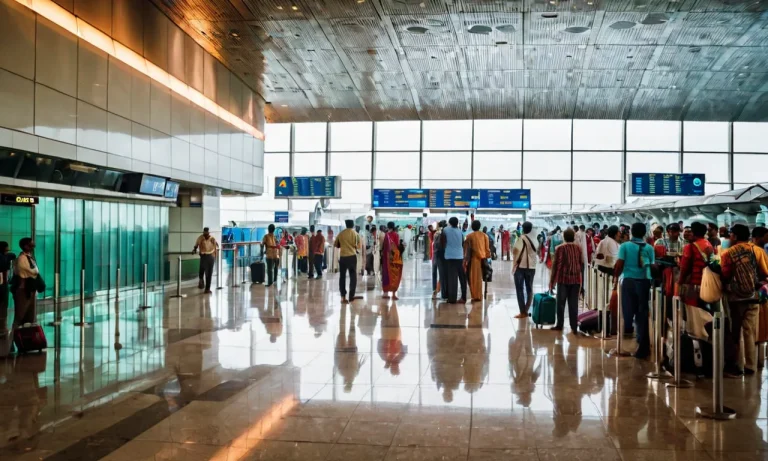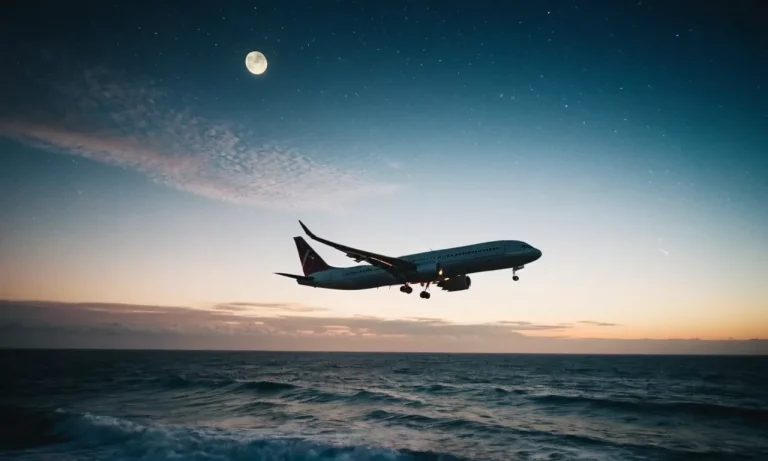How Many People Fly Per Day: A Detailed Look At Air Travel Statistics
How many people fly per day? Have you ever wondered how many people are zooming through the skies on airplanes at any given moment? With over 100,000 flights taking off around the world every day, the answer may surprise you.
If you’re short on time, here’s a quick answer to your question: over 10 million passengers fly per day globally across both domestic and international flights.
In this comprehensive guide, we’ll break down the daily air travel figures and trends. You’ll discover key stats on the total number of daily flights, passengers, and destinations. We’ll also explore who is flying, factors impacting travel volume, and where experts see things heading next for the aviation industry.
Breaking Down the Numbers: Key Air Travel Statistics
Over 100,000 Flights Daily
When it comes to air travel, the numbers are truly staggering. Every single day, there are over 100,000 flights taking off and landing around the world. This means that at any given moment, there are thousands of planes soaring through the sky, connecting people to different corners of the globe.
The sheer volume of flights is a testament to the incredible infrastructure and logistics that make air travel possible.
Around 10 Million Passengers Each Day
With such a large number of flights, it’s no surprise that there are also millions of passengers taking to the skies every day. On average, around 10 million people board planes and embark on their journeys each day.
This number includes both domestic and international passengers, highlighting the global reach of air travel. Whether it’s for business or pleasure, millions of individuals rely on airplanes to transport them to their desired destinations.
Serving Approximately 3,700 Destinations Worldwide
The global network of airports is truly extensive, with approximately 3,700 destinations served by airlines around the world. This means that no matter where you are, there’s likely an airport within reach that can connect you to your desired location.
From major international hubs to smaller regional airports, the aviation industry strives to provide convenient access to a wide range of destinations.
These statistics paint a picture of just how integral air travel is in our modern world. The ability to travel quickly and efficiently has opened up opportunities for business, tourism, and personal connections on a global scale.
As technology continues to advance and air travel becomes more accessible, these numbers are only expected to rise. So the next time you board a plane, remember that you are just one of millions of people taking to the skies each day, all connected by the wonder of flight.
Who is Flying and Why?
When it comes to air travel, there are various reasons why people take to the skies. Whether it’s for business, leisure, or visiting loved ones abroad, the aviation industry caters to a diverse range of travelers.
Business Travel Trends
The world of business relies heavily on air travel, with professionals constantly crisscrossing the globe for meetings, conferences, and networking opportunities. Business travelers often value efficiency and convenience, seeking out airlines that offer reliable schedules, comfortable amenities, and seamless connectivity.
With the advent of technology, virtual meetings and teleconferences have become more common, but face-to-face interactions remain crucial in many industries.
According to IATA, in 2019, approximately 30% of all air travelers were flying for business purposes. This accounts for millions of people taking to the skies every day to conduct business worldwide. From entrepreneurs to executives, business travelers play a significant role in keeping the global economy moving.
Vacationers and Adventure Seekers
For many, air travel is synonymous with vacations and adventure. Whether it’s a tropical beach getaway, a thrilling ski trip, or a cultural exploration in a foreign city, vacationers make up a substantial portion of air travelers.
They seek relaxation, new experiences, and the opportunity to escape their daily routines.
According to the World Tourism Organization, international tourist arrivals surpassed 1.4 billion in 2018. With the increasing popularity of travel and the rise of budget airlines, more people than ever before are jetting off to explore new destinations.
From backpackers on a shoestring budget to luxury travelers seeking indulgence, the allure of discovering new places drives many vacationers to take to the skies.
Visiting Friends and Family Abroad
Another significant group of air travelers consists of those visiting friends and family who live in different countries. Many individuals have loved ones residing in far-flung corners of the world, and air travel provides the means to connect and strengthen those bonds.
Whether it’s attending a family reunion, celebrating a milestone, or simply spending quality time together, visiting loved ones abroad is a common reason for air travel.
The Migration Policy Institute estimates that there are approximately 272 million international migrants worldwide. This figure highlights the widespread need for air travel to maintain and nurture familial and social connections across borders.
From business travelers keeping the wheels of commerce turning, to vacationers seeking new adventures, and individuals visiting loved ones abroad, air travel caters to a diverse range of passengers. Each person has their own unique motivation for taking flight, contributing to the bustling world of aviation.
What Impacts Air Travel Volumes?
Seasonality
One of the key factors that impact air travel volumes is seasonality. Travel patterns tend to fluctuate throughout the year, with certain months experiencing higher passenger numbers than others. For example, during the summer months, when schools are on break and families go on vacation, there is typically a surge in air travel.
Similarly, during holiday seasons like Christmas and New Year, airports are usually bustling with travelers. The biggest travel day, in fact, is the Wednesday before Thanksgiving.
Global Economic Conditions
The state of the global economy also plays a significant role in determining air travel volumes. During periods of economic growth, people tend to have more disposable income, which often leads to increased travel.
On the other hand, during economic downturns, people may cut back on non-essential expenses, including travel. Factors such as employment rates, consumer confidence, and exchange rates can all influence the demand for air travel.
External Events and Disruptions
External events and disruptions can have a profound impact on air travel volumes. Natural disasters, political unrest, terrorist attacks, and pandemics are just a few examples of events that can significantly disrupt air travel.
In such situations, airports may be forced to cancel flights, impose travel restrictions, or close altogether, leading to a decrease in passenger numbers. Likewise, external events like major sports events, festivals, or conferences can drive up air travel volumes as people travel to attend these gatherings.
It’s worth noting that these factors are not mutually exclusive and often interact with each other. For example, a combination of favorable global economic conditions and a popular sporting event can result in a surge in air travel.
Similarly, adverse weather conditions during peak holiday seasons can lead to flight cancellations and reduced passenger numbers.
If you want to dive deeper into air travel statistics and trends, you can visit websites like International Air Transport Association (IATA) or Federal Aviation Administration (FAA). These organizations provide valuable insights and data on air travel volumes, passenger demographics, and industry forecasts.
The Future of Air Travel: Where Things May Be Headed
Continued Overall Growth Projected
The future of air travel is expected to see continued overall growth in the number of people flying per day. According to the International Air Transport Association (IATA), the number of air passengers is projected to double by 2037.
This growth can be attributed to various factors, including the increasing global middle class, improved connectivity between destinations, and the rise of low-cost carriers.
More Budget Airlines and Cheaper Fares
One significant trend shaping the future of air travel is the emergence of more budget airlines and the subsequent decrease in airfares. With the rise of low-cost carriers such as Southwest Airlines, Ryanair, and AirAsia, flying has become more accessible and affordable for a larger segment of the population.
This has resulted in an increase in the number of people flying per day, as more individuals can now afford to travel by air.
According to a report from Statista, the global low-cost carrier market is expected to reach a value of $336 billion by 2025. This indicates the growing popularity and demand for budget airlines and cheaper fares.
Technology Innovations Improving Experience
The future of air travel is also expected to be shaped by technological innovations aimed at enhancing the overall travel experience. One notable development is the use of biometric technology for identity verification and boarding processes.
This technology allows passengers to go through security and boarding procedures seamlessly, reducing waiting times and improving efficiency.
Another technological advancement is the use of virtual reality (VR) and augmented reality (AR) to enhance in-flight entertainment and provide a more immersive travel experience. Passengers can now enjoy virtual tours of their destination, watch movies in a virtual cinema, or even play interactive games during their flight.
Furthermore, airlines are investing in aircraft technologies that improve fuel efficiency and reduce carbon emissions. This is an important step towards sustainable air travel, as it not only benefits the environment but also helps airlines reduce operational costs.
The future of air travel holds exciting possibilities, with continued growth, more budget options, and technological advancements that aim to enhance the overall travel experience. As more people have the opportunity to fly, air travel is set to become even more accessible, affordable, and enjoyable for travelers worldwide.
How Many People Fly Per Day – Conclusion
With over 100,000 flights crisscrossing the globe daily, the sheer scale of air travel is staggering. After learning about the approximately 10 million passengers in the air at any moment, the key drivers shaping volumes, and where the industry may be headed next, you now have deeper insight into this vital transportation network that has connected our world.








